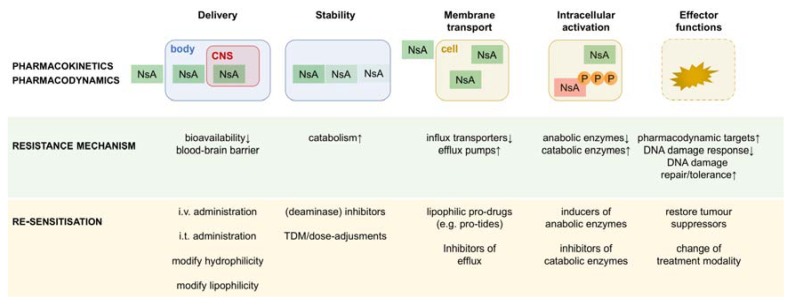Figure 2.
Schematic representation of the levels of resistance to nucleobase/nucleoside analogues. Resistance to nucleobase/nucleoside analogues can occur at the pharmacokinetic levels of delivery (e.g., due to the blood-brain barrier), stability (e.g., due to plasmatic catabolic activity), membrane transport (e.g., due to down-regulation of influx transporters), and intracellular activation (due to an imbalance in anabolic and catabolic enzymes). Further downstream, pharmacodynamic resistance can occur (e.g., due to overexpression of drug targets). Drug efficacy critically depends on the underlying tumour biology that determines the general susceptibility to cytotoxicity (for details, see text). Examples for re-sensitisation strategies are given. NsA, nucleoside analogue; TDM, therapeutic drug monitoring; CNS, central nervous system.

